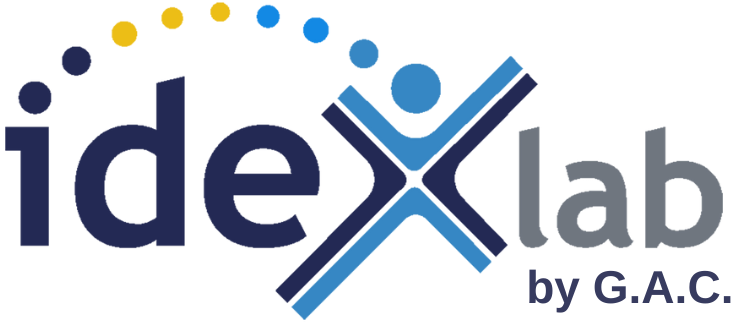Interview with Anders Hjalmarsson
Interview with Anders Hjalmarsson of Viktoria Swedish ICT, Götegorg, Sweden. Author of “Beyond Innovation contest: a framework of barriers to open innovation of digital services”
Q: Hello Anders, thank you for your time today. We would like to discuss the main findings of your work related to the “Open Innovation barriers”, work that you have presented at the European Conference on Information Systems on June 9 2014.
To start with, could you say a few words about yourself, your interest and research areas?
A: Sure, thanks for the opportunity of this interview. At Viktoria Sweedish ICT I do research on Open Innovation applied to the transportation and automotive industry. I work together with public transportation authorities in Sweeden and Europe with the aim of creating a basis for digital Open Innovation based on Open Data.
Similarly we work with the car industry, namely Volvo who has interest in the digital innovation applied to their own industry.
Q: How does this study fit in your own and your department work and research projects ?
A: We have done a number of different research projects since 2009, including the “Innovation for sustainable everyday travel”, a 4M€ project spanning from 2009 to 2011. We created a hub for public transportation’s open data exploitation. The different Governmental organization in Sweden delivered their data and we created the web platform for new application to be developed. In 2010 we started thinking about the way to connect with the developers’ community. One thing we did was to organize a contest “Travelhack 2013”, under the premise of “making every day transportation more sustainable”.
Q: Can you give us a one or two examples of applications that were developed during this hackathon ?
A: Yes, the winner was a mobile travel planner for people with cognitive dysfunctions. It helps plan the travel in detail from door to door and make public transportation accessible to these people. The first public version is expected shortly now on iOS and Android platforms. Another winner in the “make travel funnier” category is an app that matches your travel position with music that was composed in the area.
Q: These seem to be very interesting apps ! So how is it that your starting point in the paper is that many contests ideas do not transform into actual products or services ? What is the success ratio ?
A: As a matter of fact we have observed in our contest that the majority of these brilliant solutions just died, they don’t turn into viable applications. So we started to investigate the reasons why there was so much “waste” in these digital services contests, and the paper you are mentioning is the first result of this analysis.
We also realized a lack of analysis of innovation contest success and this calls for additional research on this topic going forward. Initially we made a simple comparison of three contests and found an average 9% of viable services (see table 1). When we presented this at ECIS2014 earlier this month we had comments that this percentage is rather high compared to other contests.
Naturally we wanted to understand the reasons for these wasted efforts and try and create a methodology that enables the organizers of contests to generate more viable services and to manage the post contest process to optimize the global outcome.
Q: What was the methodology of your study ?
A: We have proceeded in three main steps:
-
A comprehensive literature review related to open innovation barriers, we studied 24 papers from the most influential journals and found 179 factors that we have grouped into 10 categories.
-
We interviewed teams involved in the Travelhack 2013 contest prior to the final and we established a list of anticipated barriers.
-
We have then contacted the teams again two months after the contest and updated the list and the ranking of perceived barriers.
Q: So what are the main perceived barriers based on your data ?
A: The top 4 open innovation barriers as they were perceived after the contest are:
1) Lack of time or money to pursue the development of the application
People proposed applications because it was fun to participate in the hackathon but had no real plan or resources to take their applications to the market.
2) Lack of marketing competence/information
Most teams involved were from R&D and did not involve marketers so they lacked half of the competences to move forward.
3) Weak value offering
As a consequence of the previous point, many teams did not work on a business model and realized later that the app was cool but had a limited added value.
4) Lack of partner cooperation for development
Once apps are developed, partners and distributors need to be involved and the teams did not have the capabilities to do so.
A more complete list of barriers and their relative perceived importance is provided in table 8 of our paper.
Q: This is very clear and expected to some extent given the concept and organization of Hackathons. But would you say that similar barriers would be found in other Open Innovation approaches like the outside-in solution sourcing ?
A: I would say yes but one must be careful when extrapolating research results to other situations. This would require a dedicated study based on such innovation cases, this is an interesting and unexplored field for us.
Q: Now I suppose that your next step could be to use your framework to propose a method for shaping OI projects so that barriers are avoided or lowered, “by design” I would say ?
A: Yes we are currently developing such a model. It’s important to understand the barriers and be able to lower some but some other need to be maintained or even strengthened. These barriers are needed for the selection process of the best services. Once the objective of the contest is clear then the barriers need to be adjusted to ensure the proper competition and selection. This is the model we are working on now in a two years project just starting.
Q: Our readers and ourselves are very interested to take this one step further and develop best practices to anticipate barriers in our innovation sourcing model. I’m afraid we won’t be able to wait until the end of your project (…), so let me try an exercise and figure what would be the main points to be anticipated
|
Open Innovation barrier |
How it translates for solution sourcing |
Example of mitigation guideline |
|
1) Lack of time or money |
Bad anticipation of maturation/integration time and cost. |
An OI project shall be planned and budgeted upfront similarly to internal projects, including a specific “maturing and transfer” stage. Integration time need to be anticipated, reviewed with the provider, and budget adjusted. |
|
2) Lack of marketing competencies/ information |
Lack of interaction between R&D and product marketing. |
An OI project shall involve the whole product core team (Marketing, R&D, purchasing, Quality). OI projects conducted exclusively by e.g. R&D have low chances of success. |
|
3) Weak value offering |
Over estimation of the targeted innovation market value. Limited teams capability to build a business model. |
The project ROI need to be planned and measured, starting with a core team agreement on the target innovation market value. |
|
4) lack of partner cooperation for development |
Wrong fit between the solution provider and the seeking company. Bad project execution. |
The R&D readiness to engage in Open Innovation collaborations shall be audited. Information and training conducted. Involve professional project management and quality monitoring, include terms in supplier contracts. |
Table 3: ideXlab own elaboration on barriers anticipation
What would be your expert opinion on this, are we tackling the main dimensions with this check list ?
A: Yes, but again the priorities can only be translated carefully until we have studied specific data on similar cases. We will have results based on our study at Volvo in the near future and will keep you posted !
Q: Anders, thank you very much this was very informative. I am looking forward to reading your next research results and let’s keep in touch may be some of our users will be open to share their experience with you if you are interested.
Read the full article from Anders Hjalmarsson at http://ecis2014.eu/E-poster/files/0211-file1.pdf










